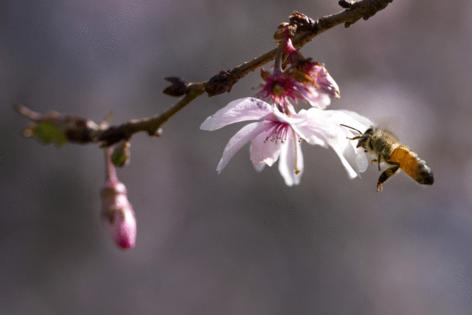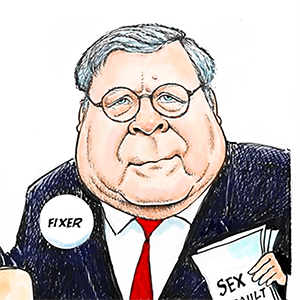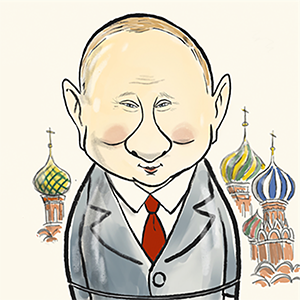David Fickling: Dead bees are a symptom of modern farming
Published in Op Eds
It’s a recurring disaster that can seem like a biblical plague: bees cropping up covered in parasites, with deformed wings, or slaughtering their own larvae. Sometimes workers will vanish from the hive altogether, leaving the queen and her offspring abandoned, Mary Celeste-style.
The coming months are shaping up to be an epic year for such devastation. As many as 70% of U.S. honey bee colonies will be lost, researchers at Washington State University said last month, thanks to a combination of factors such as disease, hunger, and poisoning.
To those of us who aren’t farmers or beekeepers, such numbers can seem mysterious, and apocalyptic. It’s not always easy to see why a hive is failing. Even scientists aren’t exactly sure what causes colony collapse disorder, a phenomenon that’s grown rapidly since the mid-2000s and is characterized by a sudden disappearance of worker bees. It’s inevitable to think of the deaths as something akin to a divine judgment — pestilence visited upon innocent insects, as nature’s punishment for the sins of our industrialized farming system.
In truth, though, bee losses are more a side effect of modern intensive agriculture, than evidence of an environment in revolt against it. Honey bees aren’t a natural alternative to crop treatments — the factory-made pesticides, fertilizers and crop strains that farmers routinely use to coax more produce out of their fields. Instead, they’re a crop treatment in their own right. To the 21st century farmer, hives are as much a part of the arsenal of modern, industrialized agriculture as mechanical harvesters and genetically modified seeds.
Farmers don’t station hives near their fields for the sake of it. They don’t do it to make a profit selling honey, either — apiculture is notoriously low margin. Instead, it’s done for the sake of “pollination services” — the ways that bees’ gathering of nectar and pollen can enhance the yield and quality of crops.
This is big business. Animal pollination improves the output of harvests by as much as $577 billion a year. Up to 8% of global production would be lost without it.
The benefits are well recognized across the world. In Burkina Faso, sesame seeds were three times heavier in farms pollinated by honey bees. In Argentina, apples from orchards with high-quality hives were sweeter and larger, lifting profits by 70%. In California, bee-pollinated almond farms produced 20% more kernels per hectare than those that weren’t.
The result is a burgeoning industry whereby beekeepers, farmers, and truckers work together to their mutual benefit. Bees have their biggest effect on crops during the brief period when they are in bloom, because typically only fertilized flowers will produce fruit. As a result, hives are trucked from one part of the country to another to follow the blossom season, causing occasional mishaps when a crash spills millions of disoriented and aggressive stinging insects onto the road.
It’s a worthwhile system if we want food to be abundant, profitable and cheap. But we shouldn’t kid ourselves that it’s much more natural than the herbicides, nitrates and polythene sheeting that we spread across farmlands with the same objective. It’s not without consequences for the rest of the environment, either.
For one thing, our honey bee colonies are a monoculture quite as much as our endless fields of soybean and wheat. Numerous species are capable of pollinating plants. The Western honey bee, apis mellifera, didn’t even exist in the Americas before Columbus. However, it does the job better than any other species. It’s not especially picky about which plants it visits, and copious honey production ensures beekeepers have an additional way to top up their income when they’re not renting their hives to farmers.
That’s another way of saying that honey bees are out-competing species which are not as well-adapted to the needs of modern industrial farming. As a result, less useful native species are in decline worldwide in response to the invasive threat. That could have far-reaching effects. There are still plenty of crops that honey bees don’t like to visit, and if their natural pollinators start disappearing because apis mellifera is eating all their nectar, then food production will suffer.
The dominance of the honey bee is also the biggest contributor to hive losses. Diseases tend to follow population growth and density. Human epidemics didn’t exist before we started settling in cities, and world-spanning pandemics didn’t emerge until the age of sail, steamships and aircraft started transporting infected humans from one continent to another.
On a micro scale, the modern pollination industry has urbanized and globalized the bee population, ensuring that parasites like the varroa mite and sacbrood virus travel farther and faster than ever before. If you think the 70% of US bee colonies lost this year is a big number, consider that about 50% of colonies are lost in a normal year.
For our food systems, the rise of the honey bee has been an unqualified success. For our ecosystems, though, there is plenty of bitter to accompany the sweetness.
_____
This column does not necessarily reflect the opinion of the editorial board or Bloomberg LP and its owners.
David Fickling is a Bloomberg Opinion columnist covering climate change and energy. Previously, he worked for Bloomberg News, the Wall Street Journal and the Financial Times.
_____
©2025 Bloomberg L.P. Visit bloomberg.com/opinion. Distributed by Tribune Content Agency, LLC.




























































Comments